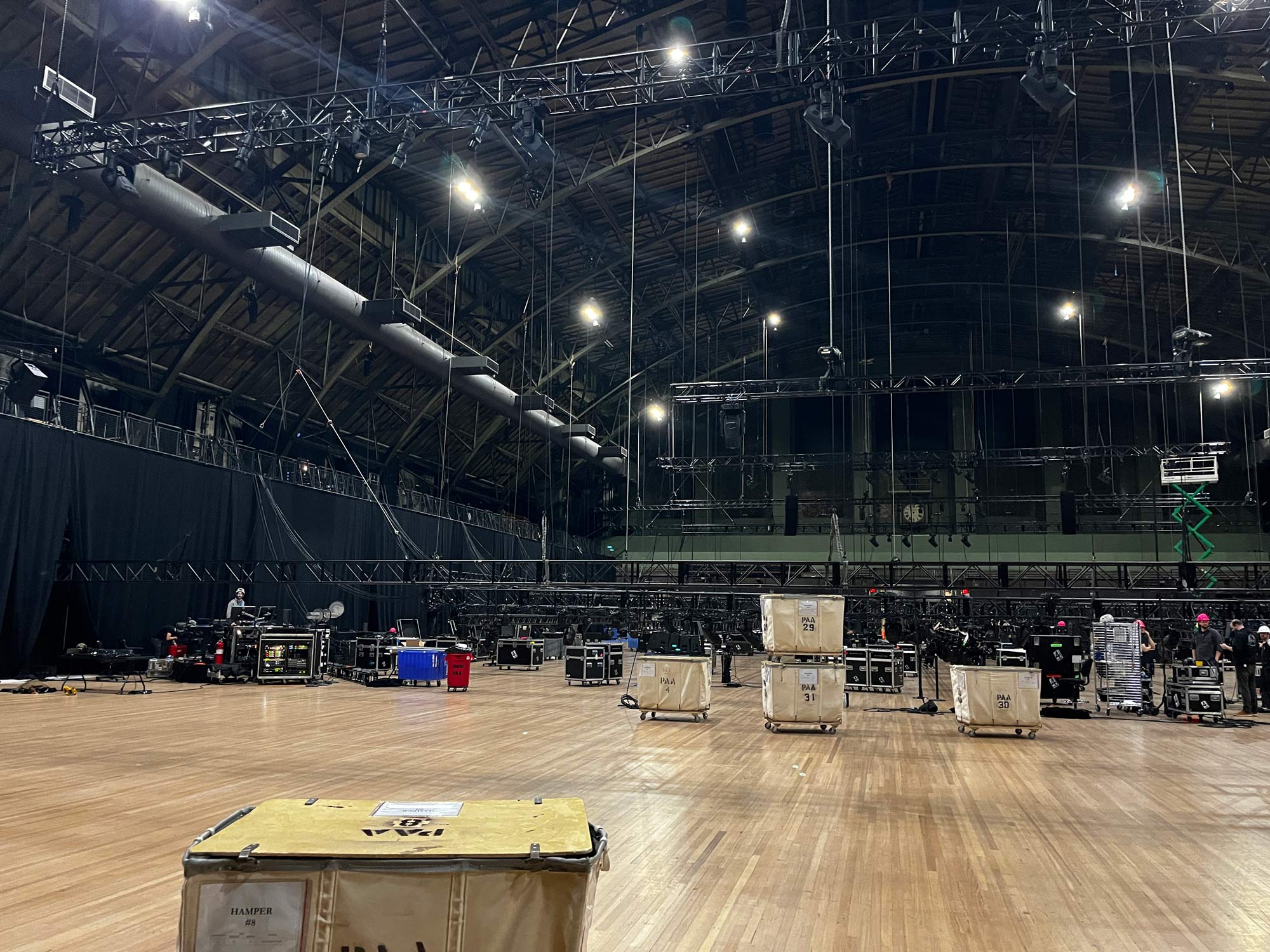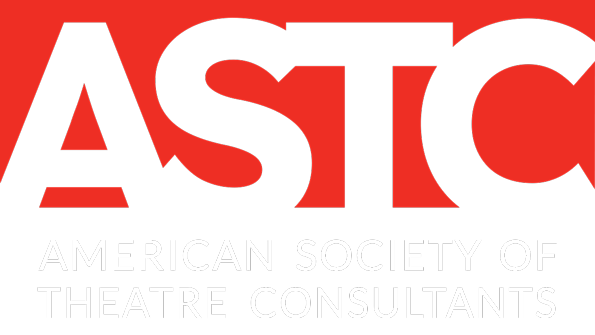Quietly Teaching Rock ‘n’ Roll

A load in at the Armory for the Arts, New York City. Arena-style lighting is common for entertainment events (Photo by Paul Sanow, ASTC).
I have been thinking recently about my first job after college. With my brand-new degree in theatre, I wanted to work in rock 'n' roll lighting, so I got a job at a well-known production lighting shop in NYC (some might have called it notorious.) I found out very quickly that despite my four years of training by some very dedicated teachers and mentors, there was a lot I didn’t know. I’d never seen a 19-pin connector. I’d never done a tie in to a company switch or seen a Cam-Lok™ tail or run feeder cable. I was unprepared for the touring world. Theatre planners need to realize some of the students in the venues being designed today may decide to tour or work in live event production after college. Whether it be rock 'n' roll, the road company of a musical or dance troupe, or corporate events, perhaps they should be better prepared to work in live event production. If we make some changes in the way we design lighting systems, these changes might also be used to meet future needs.
Lighting fixtures and power needs at lighting positions have been changing rapidly over the past decade and there is no reason to assume that trend will not continue. In fact, it may be hard to see what will be needed in venues in the future. The days of putting connector strips with individual circuits and receptacles every 18” seems to be gone along with racks of dimmer modules. Instead, a few receptacles can power a string of daisy-chained fixtures. But how many? Is the power demand going to rise as the LED profile spots increase from 150W to 250W to 375W and more? Will LED lighting soon need the same draw as needed for incandescent fixtures? Or will there be more and more demand for small moving lights at 600 or 700W? Will greater efficiency in both light engines and optics allow for a reduction in instrument wattage? It is difficult to foresee.
One way to think about creating power systems for an unknown future is to make them more flexible. Small company switches distributed at the right locations such as catwalk ends, galleries, and on stage can allow for a flexible, soft cable distribution system. By using portable distro boxes, break-outs, and daisy-chaining power between fixtures, one can create a system that can be modified to meet the needs of any light plot today, and evolve with technology in the future. Not only does this create more flexibility, but it reduces the quantity of dimmers or relay panels, outlet boxes, and raceways that need to be installed, therefore reducing material costs and installation time. Many entertainment distro boxes also have DMX distribution built in, reducing the amount of network taps, nodes and switches, and category cable that need to be installed. But perhaps the most important added benefit of this approach is exposing students to the techniques of temporary production. Even if it is not part of the curriculum, students will show up to those first jobs with a greater skill set because they will have been exposed to this equipment and the techniques in their theatre facilities.
This may not be the correct approach to every teaching venue, but with foresight and planning, we can use some of the techniques of temporary production to improve the venues of today and tomorrow. We can achieve greater flexibility and futureproofing, lower material and installation costs, and reduce the installation time. But perhaps more importantly, in the long run, we can intentionally expose students to more equipment and techniques to better prepare them for a variety of opportunities for employment after graduation. System designers can do this without ever being there to teach them in person.
By Howard Glickman, ASTC
Disclaimer: Any views or opinions expressed in this article are solely those of the author and do not necessarily represent those of the American Society of Theatre Consultants. This article is for general information only and should not be substituted for specific advice from a Theatre Consultant, Code Consultant, or Design Professional, and may not be suitable for all situations nor in all locations.



